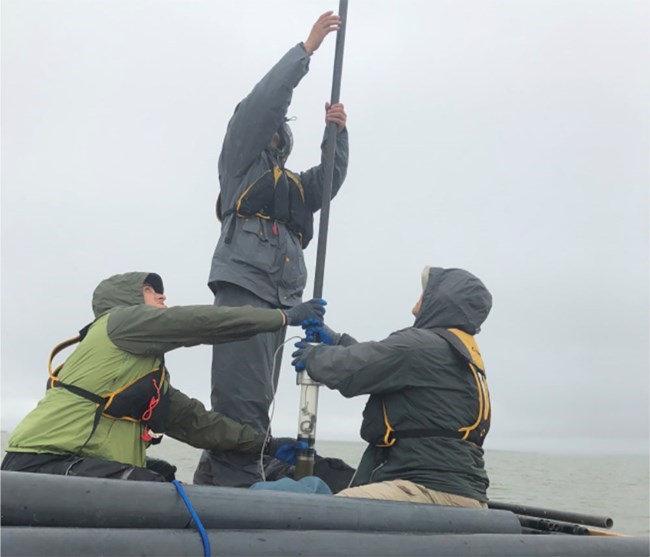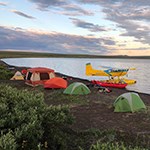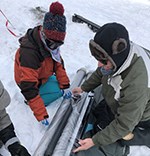
NPS/Jon O’Donnell
Partner: Brown University
Contact: Dr. Yongsong Huang
Duration: 3 Years (2018-2020)
The “Standstill Hypothesis” theorizes that “Ancient Beringians” lived in isolation on the east Beringian Arctic steppe-tundra during the last glacial maximum (LGM, 36,000 – 12,000 years ago) and are the sole ancestral population of all Native Americans. This hypothesis will be tested by looking at a wide array of biomarkers of Pleistocene humans, fauna, flora, pollen, charcoal, and fire-related chemical markers in the sediment cores of two volcanic lakes in Bering Land Bridge National Preserve. The project will also reconstruct past climates and fire history to test the idea that Ancient Beringians used fire for hunting, heating, and cooking during the LGM.
Russian Component: One of the primary cooperators, Dr. Bathsheba Demuth, is an environmental historian with extensive expertise on Russian subsistence and indigenous peoples. Researchers will present findings at a public lecture at the Chukotka Regional Museum of Local history in Anadyr, Russia. The trip will be organized by Dr. Demuth in coordination with Anadyr scholars. The researchers' visit will help to address the lack of access to cutting-edge research about Chukotka by presenting study results in a Russian-language display at the Anadyr museum. An English-language version of the display will be developed for NPS’s Arctic parks visitor centers in Nome and Kotzebue.
PROJECT UPDATES AND PUBLICATIONS

A group of Brown University researchers, funded by the Shared Beringian Heritage Program, are tracking evidence that supports a new but disputed theory about when and how human beings first arrived on the American continent.
Last updated: February 25, 2021


